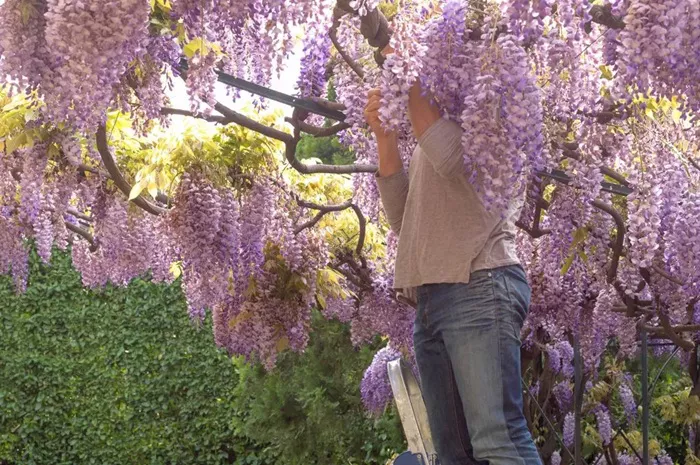Gardening expert Monty Don has shared his top tips for pruning three key plants in June to ensure they thrive and produce an abundance of flowers. Pruning is a vital gardening task that involves removing dead, diseased, or damaged parts of plants to enhance their health and appearance. Don emphasizes the importance of identifying which plants require pruning and when to do it to achieve the best results.
Plants to Prune in June
Wisteria
Wisteria should be pruned immediately after its blooming period, which typically ends around mid-June. According to Don, this is the optimal time to cut back all new shoots to a spur, leaving no more than six inches of growth. This process not only tidies up the plant but also allows it to be trained and tied in, eliminating loose or trailing shoots.
Monty Don advises gardeners to err on the side of cutting lightly if they are unsure about the severity of the pruning. A more aggressive prune can be done in the new year when the foliage has died back, reducing each side shoot to just two or three inches.
Early Flowering Shrubs
Early flowering shrubs should be pruned immediately after they finish blooming to allow new growth to ripen before winter. This will ensure maximum flowering in the following spring, as explained by Don.
For mature shrubs, Don recommends a hard prune, cutting back most of the flowering stems to a healthy new shoot. The oldest growth, up to a third or quarter of the plant, should be removed entirely to encourage renewal every three to four years. For younger shrubs, trim back the weakest growth while maintaining the overall shape and size.
After pruning, Monty Don suggests weeding, watering, and mulching with compost to support the plant’s health. Additionally, he advises taking semi-ripe cuttings from healthy, non-flowering stems to propagate new plants.
Apples, Pears, and Dessert Grapes
Fruit trees, including apples, pears, and dessert grapes, naturally shed some of their fruit to ensure the successful ripening of the remaining ones. However, this shedding is not selective, so Monty Don advises gardeners to selectively remove the smallest fruits to prevent overcrowding and ensure better growth.
Don’s recommendation is to reduce each cluster on a spur to just two fruits that are not touching each other. This not only promotes better growth and ripening of the remaining fruits but also reduces the risk of branch damage later in the year due to the weight of the fruit.
Conclusion
Monty Don’s expert advice on pruning these three types of plants in June highlights the importance of timely and careful maintenance to ensure maximum flowering and fruiting. By following his tips, gardeners can improve the health and productivity of their plants while maintaining a visually appealing garden.


